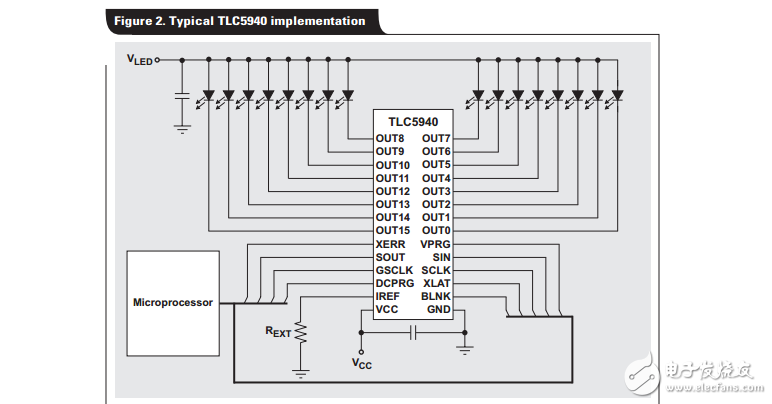
资料下载

TLC5940的点校正功能补偿了LED亮度的偏差
TLC5940的点校正功能补偿了LED亮度的偏差
The abundance of light-emitting diodes (LEDs) in various types of end equipment has surpassed even the most aggressive expectations. The reduction in LED prices, coupled with increased LED efficiency (lumens per watt), has fueled the redesign of many common devices. LEDs are entering new markets such as architectural lighting, LCD TV backlighting, car headlamps, and traffic lights. At the same time, they continue to dominate other markets such as high-quality, large form-factor video displays and alphanumeric displays. As the efficiency and brightness of LEDs improve and the cost decreases, it is anticipated that LED usage will eventually replace conventional lighting methods in consumer applications. Some of these markets, such as LCD TV backlighting and large form-factor video displays, require a much higher degree of LED brightness uniformity than is possible from the LEDs alone. This article shows how the dot correction function in the Texas Instruments (TI) TLC5940 and in other similar LED drivers generates uniform LED brightness across thousands of pixels in these displays. A stadium or advertising display like that shown in Figure 1 integrates dozens of display panels and thousands of LEDs. The individual LEDs inside each array vary significantly in brightness, with the delta in lumens between the brightest and dimmest LED regularly approaching 15 to 20%, if not more. The design engineer must ensure that each LED is calibrated to provide the same amount of brightness so that when the entire screen is turned on, it appears uniform. Without this calibration, the screen will have a blotchy, uneven look. Even after the display is properly calibrated and deployed to the field, variations in LED aging will generate changes in brightness. As a result, companies must continually solve difficult quality and maintenance issues. To compensate for variations in LED brightness and aging, manufacturers often employ two techniques: First, they purchase matched LEDs from a supplier (also known as “binning”); and second, they utilize a high-quality LED driver with dot correction functionality. LED suppliers offer the benefit of matched LEDs for an incremental increase in price. They measure and bundle these red, green, and blue (RGB) diodes together with LEDs that generate similar lumens at a specified current. Using this method can provide the desired uniformity with minimal design considerations for low-end lighting systems. However, the variance in decay rate, or degradation in brightness, per pixel over time makes this method a shortlived solution. In other words, in a year or two the picture will become blotchy. Furthermore, should a defective panel need replacement, the lumenal output of the new panel will be visually dissimilar to the others.

声明:本文内容及配图由入驻作者撰写或者入驻合作网站授权转载。文章观点仅代表作者本人,不代表电子发烧友网立场。文章及其配图仅供工程师学习之用,如有内容侵权或者其他违规问题,请联系本站处理。 举报投诉
- 相关下载
- 相关文章








